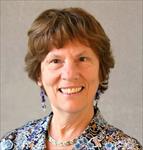07 Aug Patients With Social Risks Are More Expensive and Require Greater Medicaid Resources
MedicalResearch.com Interview with:

Dr. Ash
Arlene S. Ash, PhD
Department of Quantitative Health Sciences
University of Massachusetts Medical School
Worcester
MedicalResearch.com: What is the background for this study? What are the main findings?
Response: State Medicaid programs (and other health care purchasers) often contract with several managed care organizations, each of which agrees to address all health care needs for some of their beneficiaries. Suppose a Medicaid program has $5000 to spend, on average, for each of its 1 million beneficiaries. How much should they pay health plan “A” for the particular 100,000 beneficiaries it enrolls? If some group, such as those who are homeless, is much more expensive to care for than the payment, plans that try to provide good care for many such people will go broke. We describe the model now used by MassHealth to ensure that plans get more money for enrolling patients with greater medical and social needs. In this medical-social model, about 10% of total dollars is allocated by factors other than the medical-morbidity risk score.
MedicalResearch.com: What should clinicians and patients take away from your report?
Response: A payment formula that accounts for clinical problems but ignores social risk is likely to exacerbate inequality. Although data for measuring social risk is limited, MassHealth’s payments now recognize the additional resources needed for patients with unstable housing, those living in highly stressed neighborhoods, and those with various kinds of disabilities whose needs are not fully captured by their medical diagnoses. This payment model uses existing Medicaid data and reproducible methods to improve payment equity and support care for vulnerable beneficiaries.
MedicalResearch.com: What recommendations do you have for future research as a result of this study?
Response: Ignoring social risk factors in payment formulas perpetuates economic barriers to providing healthcare for those at higher social risk. We should learn how to recognize and pay for social as well as medical risks, so as to encourage and enable networks of clinical and community-based practitioners to work together to help socially-vulnerable persons become more healthy.
No conflicts of interest
MedicalResearch.com: Thank you for your contribution to the MedicalResearch.com community.
Citation:
Note: Content is Not intended as medical advice. Please consult your health care provider regarding your specific medical condition and questions.
[wysija_form id=”5″]
Last Updated on August 8, 2017 by Marie Benz MD FAAD
